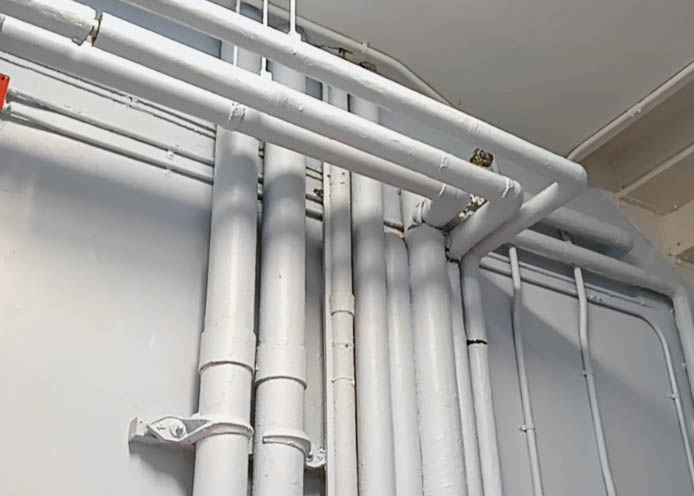During the 2018 Summer Break, renovation within the Robert L. Carothers Library and Learning Commons revealed asbestos, prompting the University of Rhode Island to place multiple warning signs throughout the building.
The asbestos was discovered on the second floor. Abigail Bernier, an industrial hygienist who is a member of URI’s Environmental Health and Safety Office, said once the asbestos was found, a rigorous cleaning process was performed before renovations were allowed to continue. Bernier assured no students were at risk of being affected by asbestos after they cleaned.
Asbestos can only be hazardous to one’s health when it is airborne. This means that a student can not be affected by the asbestos simply by being in a building that contains it in the building materials.
In order for asbestos to become airborne, there must be a disturbance to the materials containing the fibers, such as the drilling or ripping out of tiles. When there is going to be renovation on a building, there is a test in place to assure that any asbestos is detected and cleaned so that it will not be at risk of becoming airborne and impacting those around the renovation site.
Asbestos was used as a common building material because it is naturally occurring and was effective for many different uses. In the 1980’s however, asbestos was found to have hazardous properties and its usage in building materials became prohibited. Because it was a common building material before the 1980’s, many older buildings contain asbestos.
Bernier said that employees of URI’s Facilities Services have asbestos awareness training and all major renovations, especially in older buildings, have procedures in place in the event that the fiber is detected.
“As we renovate areas, we remove it at that time,” Bernier said.
Before renovation begins on a building, those involved test suspected materials, such as floor tiles and insulation at a professional lab to determine whether or not asbestos is present. If asbestos is detected, a cleaning process begins. Bernier said they are aware that the potential for materials to test positive for asbestos exist and are financially prepared for that possibility.
“For example, Bliss Hall was recently gutted and renovated and abatement was an expected cost,” Bernier said. “We understood that will be a step. We won’t start ripping up materials until [they are] tested.”
Bernier explained that the first step of the process involves creating a state-approved asbestos abatement plan that must be approved by the Rhode Island Department of Health.
Once abatement begins the impacted area is sealed off with polyurethane sheeting and negative air machines are used to assure that even if there was a breach in the containment no air would escape the impacted area, Bernier said.
A second company that is independent of the one performing the abatement monitors the air quality during the abatement and the air must pass testing at the end of the project, Bernier said. The containment around the impacted area cannot be taken down until testing shows no airborne asbestos. Additionally, Bernier said triple filters are used to clean the air before it goes into the environment.
The materials containing asbestos are tracked starting the moment they are removed from the renovation site and documentation of where the materials are being taken are sent to the Rhode Island Department of Health, Bernier said. Certain landfills are allowed to accept the materials containing asbestos.
Bernier wants students to know that the abatement process is very thorough and that students do not need to worry about asbestos when they are in the library. “There are checks and balances upon checks and balances,” Bernier said.
The area containing asbestos during the recent renovation in the library was approximately a 400 square foot space, Bernier said. She said it was a one day project because the area was relatively small.
An asbestos abatement process was also recently completed in Chaffee Hall. Part of a production studio in the building was undergoing major renovations and the hallway outside had floor tiles containing asbestos. Bernier said materials in the studio were also tested for asbestos but tests came back negative. The abatement in Chaffee Hall also took one day to complete.


